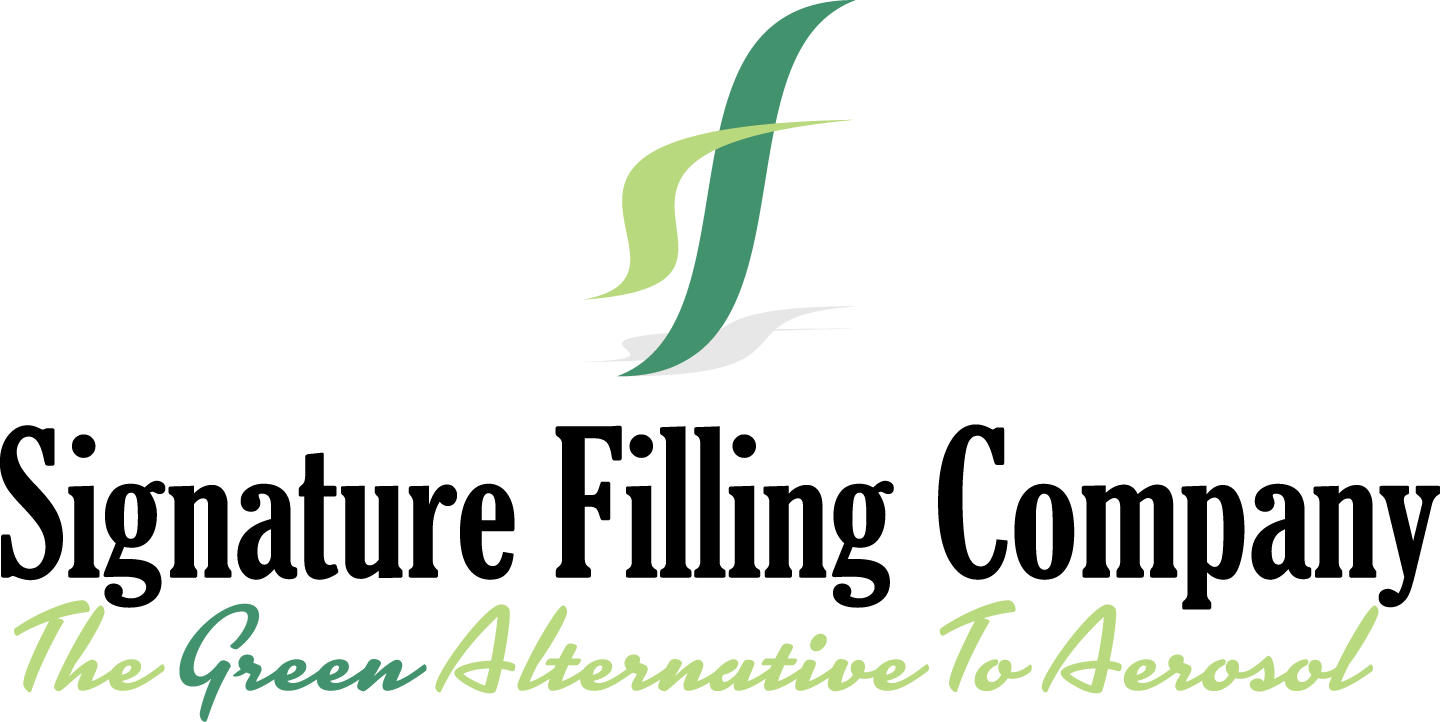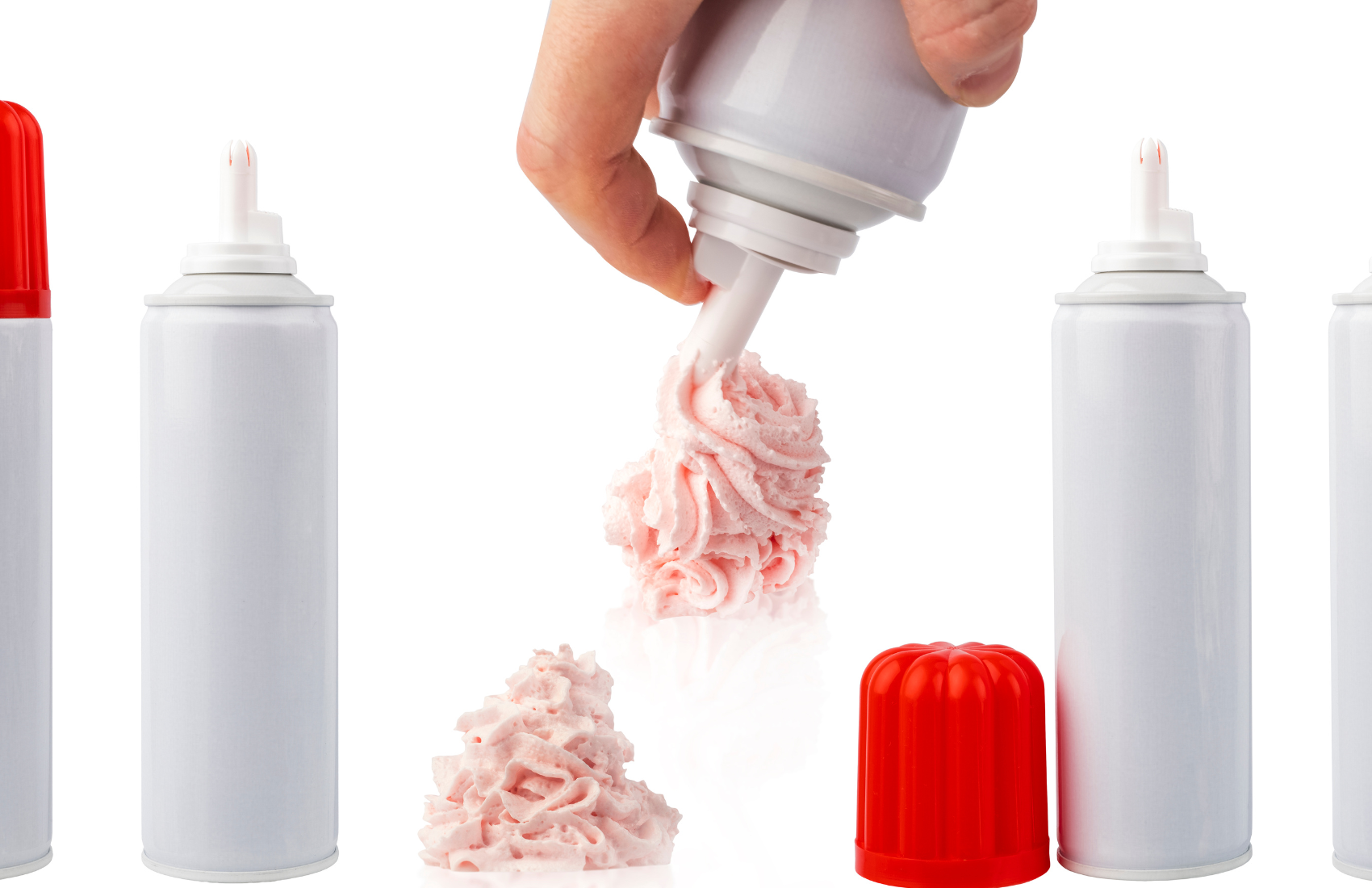BOV Food Packaging: Food-Grade Aerosol Alternatives
BOV Food Packaging: The Future of Food-Grade Aerosol Alternatives
In today’s fast-paced world, consumers expect food products that offer convenience without compromising on quality or safety. At Signature Filling Company, we’ve witnessed firsthand how packaging innovations can transform the food industry—and few developments have been as revolutionary as Bag-on-Valve (BOV) technology.
As food manufacturers seek alternatives to traditional aerosols, BOV food packaging has emerged as a game-changing solution that’s reshaping how we think about dispensing food products. But what exactly makes this technology so special, and why should your brand consider making the switch to these food-grade aerosol alternatives?
Beyond the Can: Understanding BOV Food Packaging
BOV technology represents a fundamental shift in how pressurized products are packaged and dispensed. Unlike conventional aerosol systems, which mix the product with propellants, BOV creates a physical separation between the two.
Here’s how it works: A flexible, multi-layer bag containing the food product is attached to a specialized valve and placed inside an aerosol can. The space between the bag and the can is pressurized with compressed air or nitrogen. When the valve is activated, this pressure gently squeezes the bag, dispensing the product without any propellant contamination.
This seemingly simple design difference creates profound advantages for food applications—where product integrity and safety are non-negotiable priorities.
Why Traditional Aerosols Fall Short for Food Applications
Traditional aerosol packaging has served the food industry for decades, but it comes with inherent limitations:
- Product-propellant mixing: Conventional aerosols allow direct contact between chemical propellants and food products
- Contamination risks: Each time the product is dispensed, air can enter the container
- Inefficient evacuation: Traditional systems often leave 5-15% of product trapped in the container
- Environmental concerns: Many traditional propellants contribute to greenhouse gas emissions
These challenges have driven food manufacturers to explore alternatives, with BOV technology emerging as a leading solution that addresses each of these pain points.
7 Compelling Benefits of BOV Food Packaging
1. Uncompromised Food Safety
In food packaging, safety isn’t just a feature—it’s the foundation. BOV technology excels here by creating a sterile environment for food products. The hermetically sealed bag prevents any contact with outside air or propellants throughout the product’s lifecycle.
This isolation means bacteria and other contaminants can’t enter the package after production, extending shelf life without requiring additional preservatives. For consumers increasingly concerned about what goes into their food, this represents a significant advantage over conventional packaging methods.
2. Environmental Responsibility
Today’s consumers don’t just care about what’s in their food—they care about its environmental impact too. BOV packaging delivers several sustainability benefits:
- Lower carbon footprint than traditional aerosols
- Reduced VOC (volatile organic compound) emissions
- Higher recyclability potential
- Elimination of harmful propellants
By transitioning to BOV food packaging, brands demonstrate environmental leadership while preparing for increasingly stringent environmental regulations.
3. Superior User Experience
The user experience of food products matters tremendously, and BOV technology enhances it in several ways:
The most immediately noticeable advantage is 360-degree operation—consumers can use the product in any orientation, even upside down, without losing pressure or performance. This flexibility transforms how people interact with everything from whipped creams to cooking oils.
Additionally, BOV systems maintain consistent dispensing pressure from first use to last. Unlike traditional aerosols that gradually lose pressure, BOV provides the same quality experience throughout the product’s life, building consumer satisfaction and loyalty.
4. Preserved Product Integrity
Food products are particularly sensitive to oxidation and contamination, which can degrade flavor, texture, and nutritional value. BOV technology creates an oxygen barrier that preserves product integrity from manufacturing through final use.
For premium food products where flavor nuances matter, this preservation capability can make a decisive difference in consumer perception. The technology allows for reduced preservative use while maintaining or extending shelf life—addressing two consumer demands simultaneously.
5. Regulatory Compliance Made Easier
Food packaging regulations continue to evolve, often becoming more stringent. BOV technology helps manufacturers stay ahead of regulatory changes:
- Meets current FDA requirements for food-grade packaging
- Complies with international food safety standards
- Eliminates many propellants that face increasing regulatory scrutiny
- Provides built-in tamper evidence features
This regulatory alignment reduces compliance risks while positioning brands advantageously for future regulatory developments.
6. Economical Product Utilization
Traditional aerosol packaging typically leaves 5-15% of product unusable in the container. BOV technology achieves near-complete evacuation—often 95-99%—significantly reducing waste and improving value perception among consumers.
This efficiency translates to tangible benefits for both manufacturers and end-users:
- Reduced product waste in manufacturing
- Improved cost efficiency per use
- Enhanced consumer value perception
- Opportunity for premium positioning
7. Versatility Across Food Categories
BOV food packaging adapts remarkably well to various food products:
- Dairy products: Whipped creams, mousses, and cheese spreads
- Condiments: Mayonnaise, specialty oils, and salad dressings
- Dessert toppings: Chocolate sauces, caramels, and fruit toppings
- Savory applications: Cooking sprays, pasta sauces, and marinades
The technology handles different viscosities and formulations while maintaining precise dispensing control, opening creative possibilities for product development teams.
Real-World Success: BOV Implementation
When a leading organic food manufacturer sought to launch a premium cooking spray without artificial propellants or preservatives, they faced significant challenges with traditional packaging options. After exploring various food-grade aerosol alternatives, they partnered with Signature Filling Company to implement a custom BOV solution.
The results were transformative:
- Extended shelf life from 6 months to 18 months without additional preservatives
- 99.5% product evacuation, reducing waste and improving consumer value
- Premium positioning that increased market share by 15% in the first year
- Reduced consumer complaints about inconsistent spraying by 87%
This case exemplifies how BOV technology can solve multiple challenges simultaneously while creating new market opportunities.
Making the Transition to BOV Technology
Transitioning to BOV food packaging requires careful planning, but the process can be straightforward with the right partner. Key considerations include:
- Formulation assessment: Some products may need minor adjustments to perform optimally in BOV systems
- Design integration: Ensuring the packaging design aligns with your brand while maximizing BOV benefits
- Production planning: Coordinating fill schedules and logistics
- Consumer education: Communicating the benefits of the new packaging to end users
At Signature Filling Company, we guide partners through each of these steps, leveraging our extensive experience with BOV implementations across diverse food categories.
The Future of Food Packaging is Here
As consumer preferences continue evolving toward cleaner ingredients, environmentally responsible packaging, and premium experiences, BOV technology positions brands at the intersection of these trends.
The food-grade aerosol alternatives market is projected to grow at over 6% annually through 2028, with BOV leading this expansion. Early adopters are already seeing competitive advantages in retail placement, consumer loyalty, and premium positioning.
Beyond current applications, ongoing innovations in bag materials, valve designs, and dispensing mechanisms promise to further expand BOV capabilities for food products. Manufacturers who build expertise with this technology now will be well-positioned to leverage these future developments.
Experience the BOV Difference
At Signature Filling Company, we’ve helped dozens of food brands successfully implement BOV packaging solutions that align with their quality standards, sustainability goals, and market positioning.
Our specialized filling equipment, material expertise, and quality assurance processes ensure that your products receive the full benefit of BOV technology—from extended shelf life to enhanced consumer experience.
Whether you’re exploring food-grade aerosol alternatives for a new product launch or considering transitioning existing products to more sustainable packaging, our team can help you understand if BOV technology is the right solution for your specific needs.
The future of food packaging isn’t just about containing products—it’s about enhancing them. BOV technology represents one of the most significant advancements in this direction, offering benefits that extend from manufacturing efficiency to consumer satisfaction and environmental impact.
Ready to explore how BOV food packaging can transform your products? Contact Signature Filling Company today to discuss your specific application and discover the possibilities this innovative technology offers.


